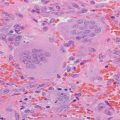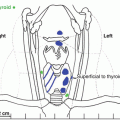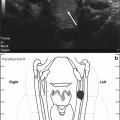© Mayo Foundation for Medical Education and Research 2016
Ann E. Kearns and Robert A. Wermers (eds.)Hyperparathyroidism10.1007/978-3-319-25880-5_1919. Secondary Hyperparathyroidism
(1)
Division of Endocrinology, Diabetes, Metabolism, and Nutrition, Department of Internal Medicine, Mayo College of Medicine, Mayo Clinic, Rochester, MN, USA
Keywords
Secondary hyperparathyroidismHypocalcemiaHypocalciuriaHyperphosphatemiaMalabsorptionMalnutritionBariatric surgeryVitamin D deficiencyCase Presentation
A 46-year-old woman was referred for evaluation of low bone mineral density (BMD) detected during evaluation for surgical management of lumbar radiculopathy. She had never experienced a fracture and routine lumbar and thoracic spine films showed no vertebral deformities. Other than radicular pain in her right lower extremity treated with gabapentin, she felt well and was without complaint on review of systems. Her prior medical history was notable for depression treated with fluoxetine, Roux-en-Y gastric bypass for the treatment of obesity 6 years prior, and amenorrhea following endometrial ablation. To date she had not experienced menopausal symptoms. In the past year, she denies use of other prescription or over-the-counter medications or supplements. She had never smoked and abstains from consuming alcohol. She had limited knowledge of her family’s medical history.
An evaluation for secondary causes of low BMD included laboratory assessment which revealed serum calcium 9.0 mg/dL (nl, 8.9–10.1), phosphorus 2.5 mg/dL (nl, 2.5–4.5), albumin 4.4 g/dL (nl, 3.5–5.0), serum creatinine 0.8 mg/dL (nl, 0.6–1.0), 25-OH vitamin D 35 ng/mL (nl, 20–50), and total alkaline phosphatase 111 U/L (nl, 39–100) with otherwise normal liver function tests. Follicle-stimulating hormone was within the premenopausal reference range. In part due to her surgeon’s request for consideration of preoperative teriparatide (rPTH 1–34) therapy, serum parathyroid hormone (PTH) was measured and retuned elevated at 194 pg/mL (nl, 15–65).
Assessment and Diagnosis
An elevation in PTH in the presence of hypercalcemia indicates PTH-mediated hypercalcemia [1]. In contrast, several mechanisms and diagnoses must be entertained when PTH elevations are associated with normal serum calcium concentrations. Even so, initially characterizing the elevation of PTH as secondary rather than primary is important as a working diagnosis of secondary hyperparathyroidism (SHP) simultaneously leads to a search for causes and options for treatment that have the potential to normalize PTH. Misdiagnosis of primary hyperparathyroidism may lead to misleading localization studies and unnecessary surgery [2]. Given disorders leading to secondary hyperparathyroidism often have broad implications for health, pursuing the cause(s) of SHP aims to accomplish more for the patient than just normalizing PTH. Occasionally, but always subsequent to a vigorous evaluation for secondary causes of hyperparathyroidism, normocalcemic primary hyperparathyroidism may be added to the differential diagnosis (see Chap. 18) [3]. The mechanism of disorders of calcium or phosphorus homeostasis leading to secondary hyperparathyroidism can be loosely divided as follows: inadequate nutrition, malabsorption, altered excretion, altered mobilization, and impaired PTH action.
Extracellular ionized calcium (iCa) is tightly regulated by PTH in response to signaling through the calcium sensing receptor (CaSR) on the parathyroid glands. A decline in iCa below an individual’s set point triggers release of PTH, which has a three-pronged action to restore calcium levels. Most immediate is increased reabsorption of calcium from the glomerular filtrate. If relative hypocalcemia persists, PTH activates enzymatic conversion of 25-hydroxyvitamin D to 1,25-dihydroxyvitamin D (calcitriol) in the kidneys. Calcitriol in turn augments calcium uptake from the gut through increased active transport across the small intestinal mucosa. If necessary to address a continuing calcium deficit, PTH mobilizes calcium from the skeleton released through activation of osteoclastic bone resorption via its effects on RANK ligand (RANKL) and osteoprotegerin [4].
Given obligatory losses of calcium through sweat, urine, and feces, calcium balance requires a sufficient daily dietary intake. The recommended daily allowance (RDA) of calcium is calculated based on obligatory daily losses of calcium and an estimated rate of absorption of calcium from diet. For PTH to indirectly improve calcium absorption, sufficient vitamin D as a substrate for calcitriol production is essential. The RDA of vitamin D for the prevention of overt skeletal disease is 600–800 IU depending in part on age [5]. A survey of foods consumed by this patient made evident that her intake of dairy, other calcium-rich foods, and foods providing vitamin D were well below suggested intakes. Although micronutrient supplementation has the potential to bridge the gap in those whose diets are insufficient, this patient reported poor adherence to the micronutrient supplementation she had previously been recommended to consume. Cutaneous production of vitamin D in response to sunlight exposure is highly variable yet can be the dominant source of vitamin D in many individuals [6]. That her 25 hydroxyvitamin D concentration was normal attests to the effectiveness of passive sun exposure during the summer when she presented.
The majority of calcium absorption occurs by passive paracellular absorption [7]. Although vitamin D-dependent absorption is important especially when dietary calcium intake is low, vitamin D sufficiency does not exclude calcium malabsorption as a cause for secondary hyperparathyroidism. In malabsorption syndromes (celiac disease, Crohn’s disease, cholestatic liver disease, bariatric surgery, short bowel, etc.), poor absorption or decreased intestinal length may compromise the availability of dietary-derived vitamin D and calcium leading to negative calcium balance and PTH release. This patient had undergone bariatric surgery which commonly is associated with secondary hyperparathyroidism [8–11]. In addition to restricting the breadth of her diet and quantity of nutrients consumed, a gastric bypass reduces the fractional absorption of calcium [12, 13], thus compounding her dietary deficit.
Assessing renal excretion of calcium provides indirect evidence of insufficiency of dietary calcium intake, calcium malabsorption, and/or vitamin D deficiency leading to SHP. The majority of calcium reabsorption from the glomerular filtrate occurs in the proximal tubule independent of PTH [14]. Still, a considerable amount of calcium reabsorption is controlled at the cortical thick ascending limb of loop of Henle (via PTH and independent function of CaSR) and the distal convoluted tubule (via PTH) [15, 16]. Although the reference range for urinary excretion of calcium in normal adults is wide, ranging between 40 and 250 mg per 24 h period, values less than 100 mg in the setting of vitamin D sufficiency raise suspicion for insufficiency of dietary calcium intake or calcium malabsorption especially when accompanied by PTH elevation. Consistent with her dietary and surgical history, this patient’s 24 h urine calcium was 54 mg per spec on a complete collection as confirmed by creatinine measurement.
Hyperphosphatemia largely occurs in the context of kidney disease. In the absence of advanced chronic kidney disease, the need to measure serum phosphorus may be overlooked when evaluating elevated PTH. Phosphate can bind to iCa leading to increased production of PTH. Hyperphosphatemia also causes increased production of FGF23 which inhibits conversion of vitamin D to calcitriol [17]. Serum phosphorus also has direct stimulatory effects on PTH production [18]. Transient and severe hyperphosphatemia can occur due to oral supplements or enemas, massive tissue injury, or tumor lysis. Chronic hyperphosphatemia which commonly occurs in chronic kidney disease, in conjunction with decreased activation of vitamin D to calcitriol, is a common cause of SHP and parathyroid hyperplasia [17]. In cases of unexplained secondary hyperparathyroidism, if the degree to which renal function (typically GFR <50 mL/min) and 1-alpha hydroxylase activity are impaired is unclear, measurement of 1,25-dihydroxyvitamin D concentration may be considered. This patient had normal renal function as evidenced by a normal serum creatinine concentration. Her serum phosphorus concentration was at the lower end of the reference range consistent with the phosphaturic effects of PTH at the proximal tubule [19].
Stay updated, free articles. Join our Telegram channel

Full access? Get Clinical Tree






